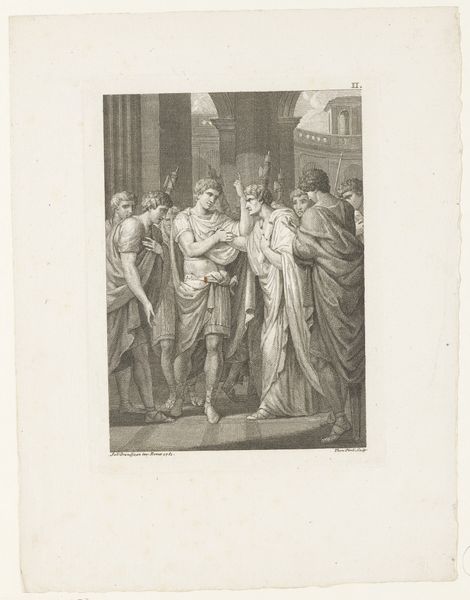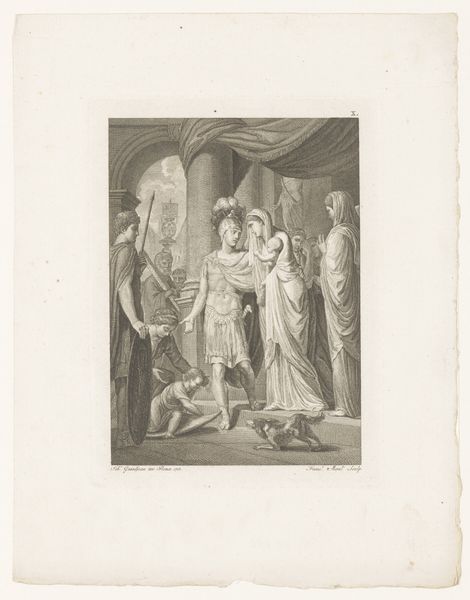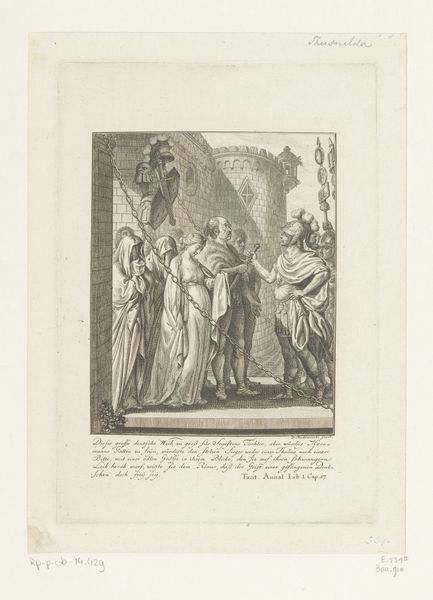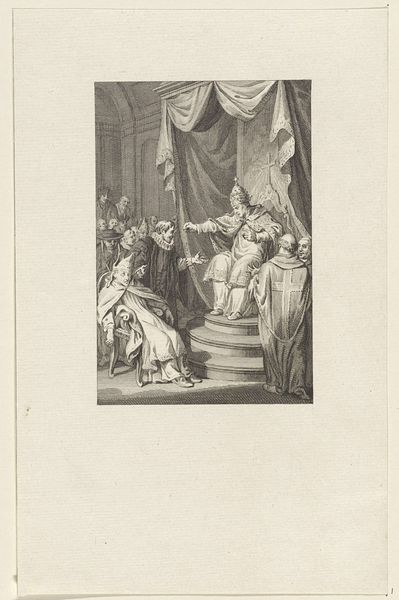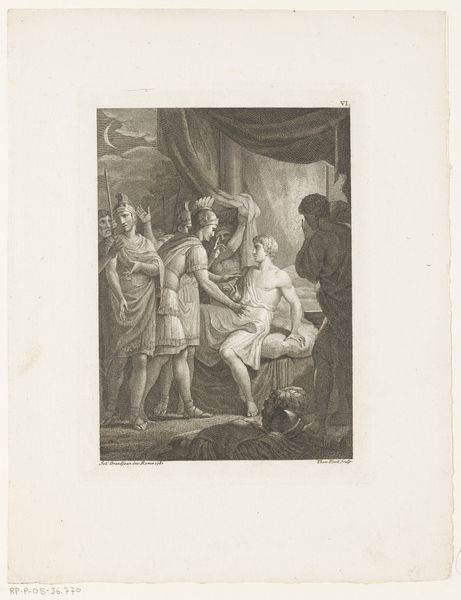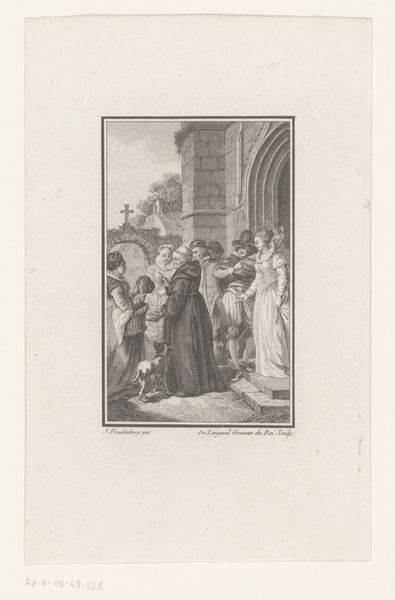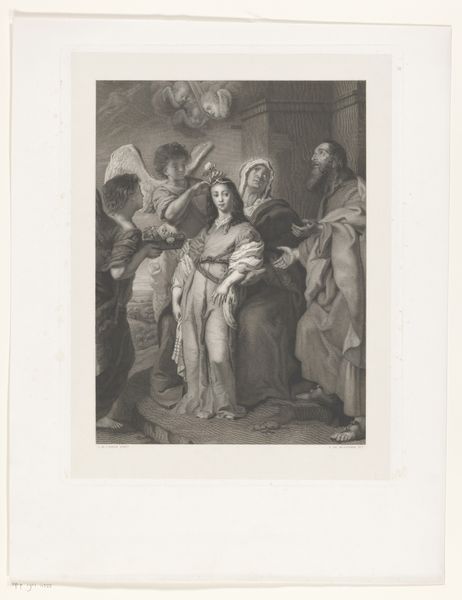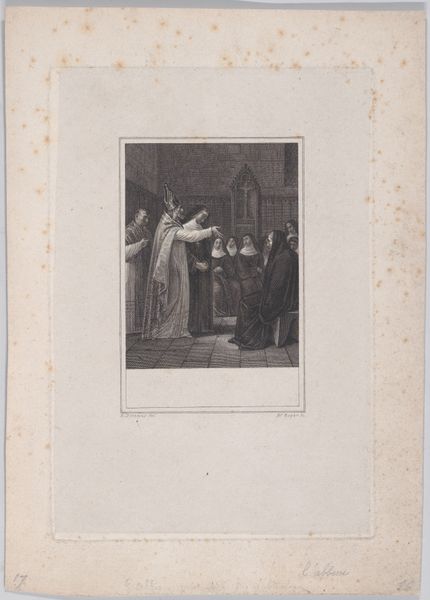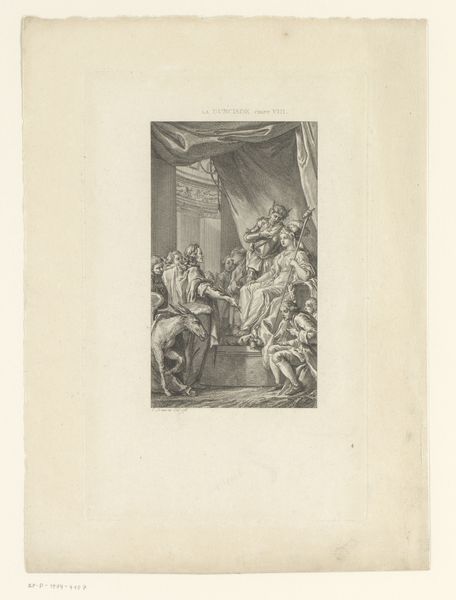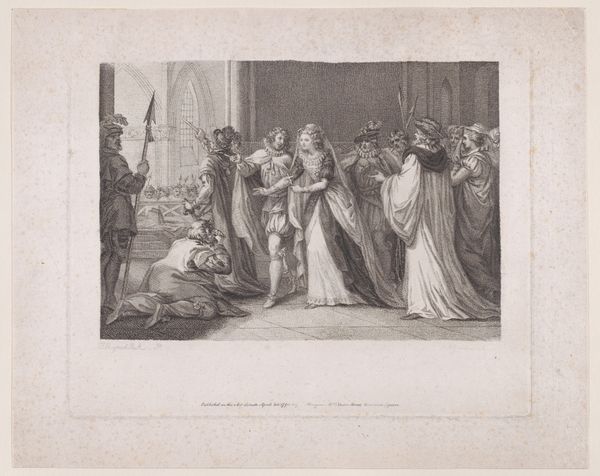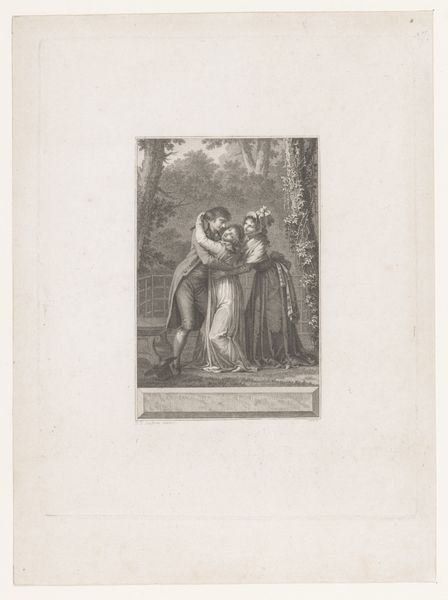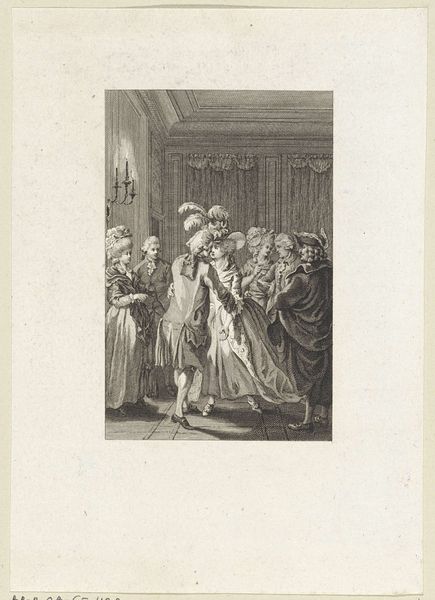
print, paper, engraving
#
neoclacissism
# print
#
classical-realism
#
figuration
#
paper
#
line
#
history-painting
#
engraving
Dimensions: height 186 mm, width 140 mm
Copyright: Rijks Museum: Open Domain
Curator: At first glance, this print strikes me as cold, but deliberately so, like a calculated gesture in monochrome. Editor: That's a spot-on read, I think. We're looking at "Twee Germanen knielen voor Germanicus" or "Two Germans Kneeling before Germanicus," made in 1783 by Louis E.F. Garreau. It is housed here at the Rijksmuseum. This engraving on paper uses a stark linearity that definitely channels Neoclassical ideals, don't you think? Curator: Absolutely! It's got that crisp, clean severity typical of the era—but beneath that, I wonder about the psychology here. The German figures kneeling feel less like defeated foes and more like… stoic acknowledgment of a superior power? Editor: The composition guides us right into that power dynamic. Garreau uses line and the figures to spotlight the very controlled display of submission to Germanicus by the two central kneeling figures and their progeny, with classical trappings all around. It's fascinating how he builds narrative through stark visual contrasts. Curator: True. Notice the strategic lighting. It washes over the Romans while leaving the kneeling figures partially in shadow. Symbolically, the print might also be about aspirations to the grandeur of the past during the political ferment of the 1780s. A time when artists and thinkers were actively seeking exemplary models of political virtue and, you could say, national identity in antiquity. Editor: An aspiration tempered by the cold realities of power, perhaps? I keep returning to the formal austerity, how every line seems meticulously placed. This speaks to an artist deeply engaged with the visual rhetoric of power as a structural system. A perfect print of calculated classicism. Curator: Right, perhaps that's where my initial feeling of coldness stems from; it's not merely aesthetic but a statement of control. It's almost as if the artist is cautioning us not to get caught up in emotional narratives. Editor: A controlled display all round! As ever, this work feels strikingly contemporary, despite being centuries old. Thanks for illuminating it.
Comments
No comments
Be the first to comment and join the conversation on the ultimate creative platform.
